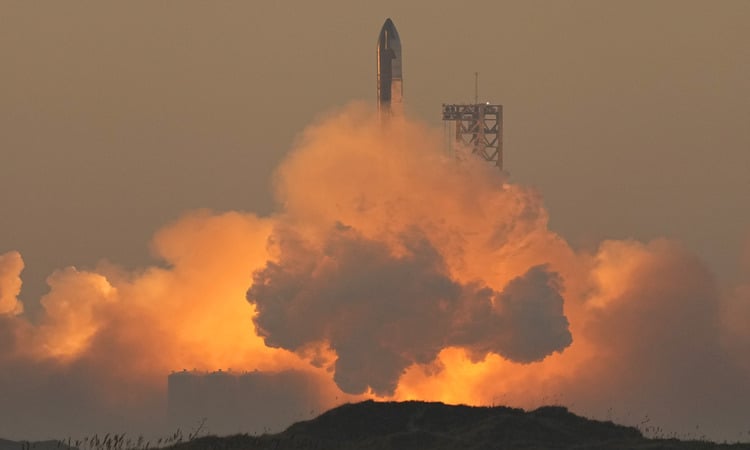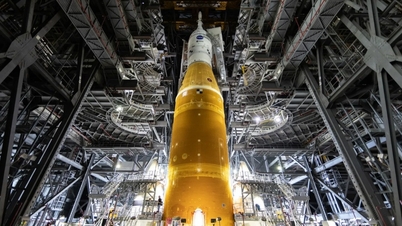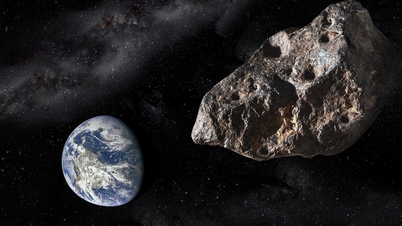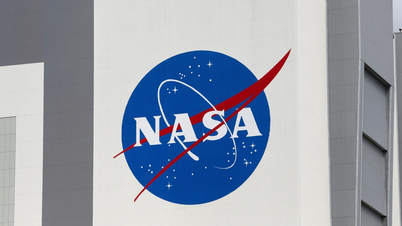SpaceX's Starship spacecraft successfully took off on November 18 and flew further than its first attempt but eventually exploded over the Gulf of Mexico.
Starship spacecraft explodes during second test flight. Video : WSJ
The Starship system flew much further than its first flight in April 2023. The booster and spacecraft lifted off from the launch pad at 7 p.m. on November 18, Hanoi time, with Super Heavy firing all 33 Raptor engines. About 2.5 minutes after liftoff, the Super Heavy rocket used up most of its fuel and the separation process took place. However, that process ended with the destruction of the 70.7-meter-tall Super Heavy booster, exploding into a fireball over the Gulf of Mexico.
The Starship's second stage used its six engines to continue to accelerate. SpaceX aimed to launch the spacecraft at near-orbital speed (28,000 km/h). However, the Starship exploded before reaching its target altitude. Communication with the Starship's thrusters failed, triggering the subsequent self-destruct algorithm.
The root cause of the Super Heavy rocket's failure is unclear. However, the booster explosion occurred after a so-called "hot staging" phase that SpaceX first tested on November 18. This method is used to separate the Starship and Super Heavy rocket after liftoff. Elon Musk, SpaceX's CEO, said hot staging is the riskiest part of the flight and the company will judge the mission successful if Starship passes that phase. But after the hot staging phase, the Super Heavy rocket rocket fell out of control and exploded in the Gulf of Mexico. SpaceX had previously hoped to be able to re-ignite the Super Heavy's engine to guide the rocket to a controlled landing.
Initially, the Starship continued to move after separation. About eight minutes after liftoff, the Starship was nearing the end of its engine burn, which would propel it into Earth orbit. But SpaceX confirmed that it lost video signal from the Starship shortly thereafter. About 11.5 minutes after liftoff, the company reported a loss of data, indicating that the Starship was not flying as planned. The onboard abort system was activated to prevent the vehicle from veering off course, ending the test flight prematurely.
If all goes according to plan, Starship will continue to accelerate into space. It will complete nearly one orbit of Earth and land in the Pacific Ocean near Hawaii. The vehicle’s self-destruction shortly after liftoff is very similar to its first launch in April. During that test flight, several of Super Heavy’s engines failed and the rocket began to fall out of control. SpaceX was forced to activate the self-destruct system, causing both stages to explode over the Gulf of Mexico.
It took SpaceX months to recover from the incident. The company was forced to rebuild the launch pad, which was shattered by the enormous force of the rocket’s engine firing. It also updated both the Starship and Super Heavy rockets. SpaceX often encounters problems early in its rocket development. The company has long maintained a path of learning how to build rockets faster and cheaper through trial and error rather than relying on ground testing and computer modeling.
NASA has invested up to $4 billion in rocket systems with the goal of using Starship to carry astronauts to the lunar surface in Artemis III, scheduled to take place as early as 2025. The mission aims to return humans to the moon for the first time in five decades. This failure could delay the development of Starship and the important missions that come with it.
When it finally takes off, Starship will surpass NASA’s Space Launch System (SLS) rocket (which successfully launched on the Artemis 1 mission last November) to claim the title of the world’s most powerful rocket. Starship can carry 165 tons into Earth orbit per mission in a reusable configuration. The Super Heavy’s 33 Raptor engines generate about 16.5 million tons of thrust at liftoff, nearly double the previous record-holder, the SLS.
An Khang (According to CNN )
Source link






![[Photo] Keep your warehouse safe in all situations](https://vphoto.vietnam.vn/thumb/1200x675/vietnam/resource/IMAGE/2025/10/1/3eb4eceafe68497989865e7faa4e4d0e)












![[Video] Hanoi continues to lead the country in innovation](https://vphoto.vietnam.vn/thumb/402x226/vietnam/resource/IMAGE/2025/10/2/6651caeab9a04120a7eb185da97226c8)















![[Photo] President of the Cuban National Assembly visits President Ho Chi Minh's Mausoleum](https://vphoto.vietnam.vn/thumb/1200x675/vietnam/resource/IMAGE/2025/10/1/39f1142310fc4dae9e3de4fcc9ac2ed0)
































































Comment (0)